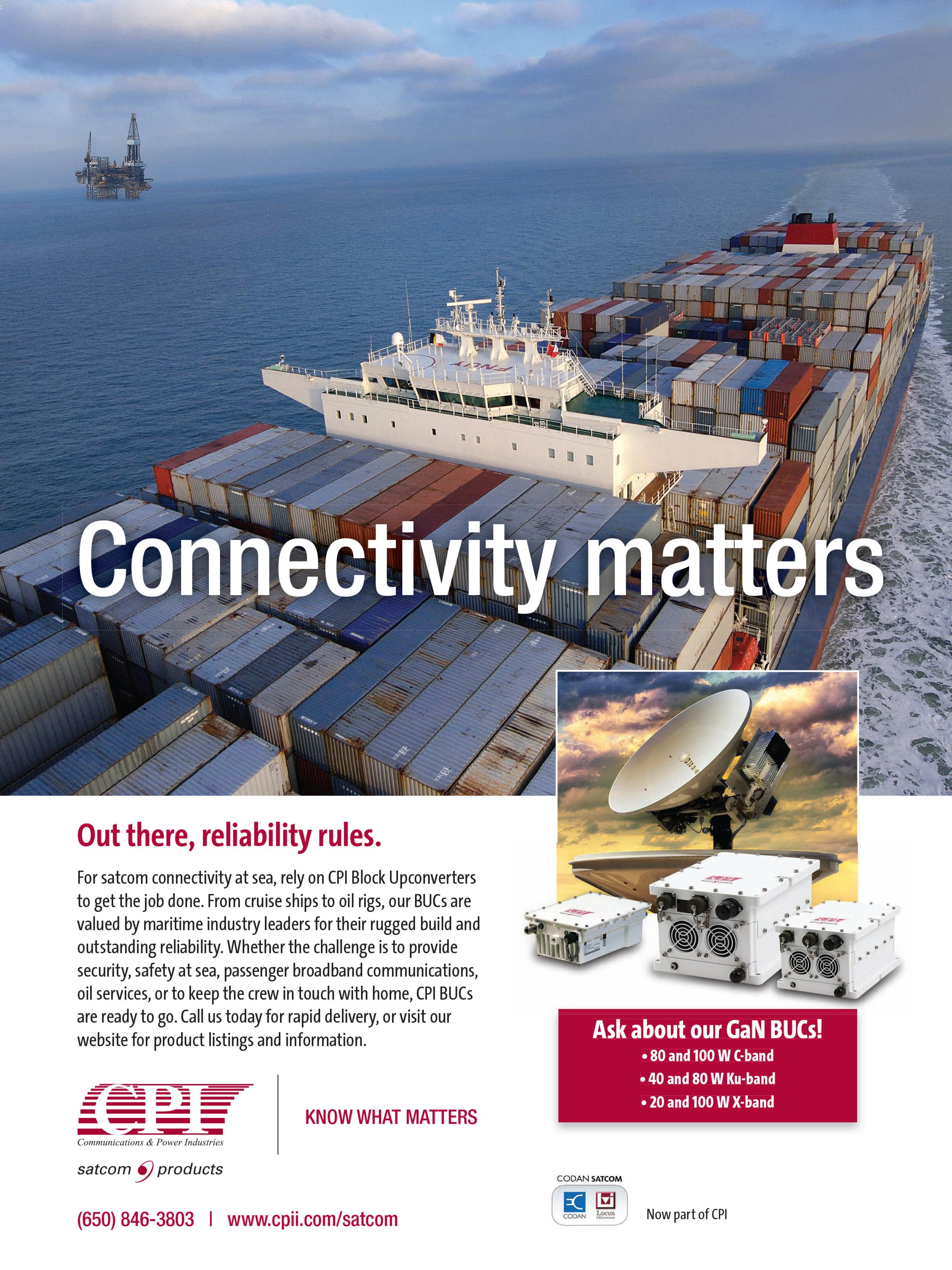
Worldwide Drone Networks: Ready for Prime Time in Satellite
Drones are the latest market for satellite connectivity, with applications ranging from oil and gas offshore inspection to ground infrastructure and maintenance for satellite ground stations themselves. With the benefits for end users, however, also comes increased responsibility from providers: the need for fast, reliable connection becomes more critical than ever.July 24th, 2023
If you use the words “drone” and “Internet” in the same sentence, you’re likely talking about Amazon. In response to inquiries about Prime Air and the Federal Aviation Administration’s (FAA) regulation around said drone package delivery service, Amazon re-directed Via Satellite’s questions to their lawyer at Akin Gump Strauss Hauer & Feld or, in other words, the Small UAV Coalition. Executive Director Michael Drobac, also the senior policy advisor for the law firm representing Amazon and Google X on behalf of the Small UAV Coalition, told Via Satellite that both companies are working together with the other coalition members to petition Congress, the Federal Telecommunications Commission (FTC), the Federal Communications Commission (FCC), and the FAA to get the United States drone market caught up to where Canada, Denmark, Germany, Australia and the United Kingdom are.

The FAA has been very responsive and open to dialogue, Drobac said, but he couldn’t help to point out the fact that Congress can force certain things the FAA has been slow about — from urban test flights for drones to general movement into sky networks. As a man representing all the Small UAV members, Drobac is behind U.S. commercial operations blooming into a global reality where drones can actually be used in cities and beyond, integrating with all air traffic. This near-term vision of urban and worldwide drone operations certainly means new applications for satellite, but right now the FAA’s proposed rules for small drones make many of those applications impossible, especially for would-be drone world leaders like Amazon.
The FAA’s Small UAS Notice of Proposed Rulemaking (NPRM) prohibits any beyond line of sight operations and, furthermore, forbids people “not directly involved in the operation” from participating by flying the drones. That means an infrastructure management project for an oil and gas major could not hire any pilots to fly their data collection drones beyond the in-house team members. This is akin to saying a company can operate, but they’re not allowed to hire delivery persons. While this is stunting drone growth in the U.S., the good news is that coalition members are receiving governmental certificates of authorization to do urban test flights in London and Vancouver. Additionally, this summer, the first full-fledged city drone delivery network is slated to launch for good (see sidebar).

With the clock ticking on the $100 million invested in the U.S. drone industry, Europe has moved beyond smaller-scale realty mapping and Hollywood film projects to performing real-time infrastructure monitoring via live video feed for instant analysis, and could soon include live aerial network news reporting and even sporting event coverage. The first, infrastructure monitoring, is no pipe dream but already a full-fledged trend in the global oil and gas industry, where British oil and gas super majors get end-to-end data solutions using UAV technology.
Sky-Futures is a UAV-based data collection company leading in oil and gas applications that is also working with Skyward and the Small UAV Coalition to bring offshore and onshore inspections to oil and gas majors operating in the U.S. Sky-Futures already has full-fledged operations in the U.K., Scandinavia, Europe, North Africa, the Middle East and in Southeast Asia. The company inspects offshore oil platforms via image collection, video, and thermal sensing ,and then subjects that data to change detection software and in-house oil and gas expertise for ultimate presentation to clients such as BP.

“UAV technology is now seen as a staple tool in the inspection tool box for oil and gas companies,” says Sky-Futures Operations Director Chris Blackford, who admits that most of the company’s operations are not currently using real-time data sent over satellite. But he makes the point that the faster the data arrives at servers for software analysis, the more valuable and relevant that time-sensitive data becomes for clients. The only reason Sky-Futures is not using satellite connectivity for its oil and gas operations is that satellite connections have been far too slow and small a data pipeline. “That’s the conundrum,” he says, “how you send data back with its gigabytes, and how you can send that back quickly and efficiently over a line such as a satellite link.”

Blackford says connections are improving, though, and when they do reach expectations, real-time data transfer will combine with eventually autonomous, self-flying drones for the ultimate inspections process: efficient, lower-cost, and a vast improvement for safety and environmentalism, enabling pre-emptive problem solving to correct issues that otherwise could lead to oil spills and machine loss.
In the nearing world of prime time drone operation, satellite also will serve the role of mission critical failsafe as it does for the rest of aviation. As Blackford says, oil and gas companies want to see a very high certainty that the system can do what it’s supposed to do, even while flying in strong winds on the high seas. And this application extends, for example, to package delivery of EpiPens and pharmaceuticals across cities in gridlock due to unexpected circumstances like weather-induced infrastructure failure. In the same way that satellite is backup for planes with mission critical objectives, so it could be the reliable safety net for drones in cities running operations that cannot fail, because lives depend on them.
Developments in robotics, computer vision and software to go onboard drones will mean new sensors, new cameras, and better software to help explore that data for oil and gas companies Sky-Futures gathers data for. However, satellite connectivity adds another dimension to that: making sure the link is never lost and, ultimately, that the ground keeps contact with drones the same way that we expect to keep contact with large passenger planes flying over the ocean.
The key enablement satellite brings to drones is safer and more reliable communications, in cities as well as remote areas. Jesse Kallman, head of global business development and regulatory affairs at Airware, shared with Via Satellite the ways the ex-Boeing founded company is creating a comprehensive platform that makes what used to be the cockpit, seem, in the case of a drone, a lot more like the Internet itself.

What Airware makes is “a common platform [for all drones] that doesn’t do anything specific to a particular industry, but it pulls it all together to go out and do commercial operations. It’s like a flight control system that helps you fly safely and reliably; it easily connects to any sensor or payload … with a cloud infrastructure for managing a lot of these systems that scale,” he says.
That drone cloud infrastructure means that when one drone in a drone network encounters something unexpected — an obstacle existing in at a certain longitude and latitude such as a hovering bird — all the drones in the city and network know and can interpret this into auto-corrected flight plans. Kallman says satellite will become integral as these networks expand, like highways, beyond individual cities to connect to one another. “Satellite is going to play a major part in a lot of the very long-range, beyond-line-of-sight operations where there may not be cellular infrastructure or it may be at a higher altitude and you need to be able to fly well beyond the line of sight where the current operators and radio systems are capable of reaching,” Kallman says. “That’s where satellite relays and those types of things will come into play. That will likely be for the larger systems; probably a lot of the smaller, low altitude systems won’t really require that but, for some of the larger systems that are flying really long missions … satellite is going to play a very important role in how communications are done.”
Portland Projects Points Way Forward for Satellite
This summer, NASA, the Congress-backed Small UAV Coalition and an aero-robotics company called Skyward are launching a live drone network: a “highway in the sky” above Portland with a real-time commercial package delivery operation rumored to include Amazon.
“We are literally carving out digital highways and zones of the sky that represent this new transportation infrastructure,” Jonathan Evans, Skyward CEO, says. “That can be translated not only into a map that human beings can read and see … but also that is machine-readable and can be directly interpreted and conformed to by drone autopilots in an aero-robotics network.”
Commercial companies Drone Deploy, DJI and 3D Robotics will help to pull the project off. Along with Robotic Skies’ droneports — airports for drones — and this ground-to-sky drone network launching in Portland , the project will have major implications for satellite. “[Skyward is] a technology company as much as anything else: VC backed and they’re building software where they’re in effect digitizing all the compliance and fleet maintenance software and putting it into an application,” Brad Hayden, CEO of Robotic Skies, says.

That application can run on a 4G LTE network to connect the shared knowledge around the above-described “drone map” in yet another iteration of the cloud. “The flight deck is becoming the Internet,” says Evans, as he explains how Drone Deploy installs 4G LTE modems in the backpack of every drone they make. This allows connected auto-updates to flight plans and demonstrations of how these drones can use modems to connect to satellite as well. These types of connected drones are ones you could deploy across oceans from London while using your iPhone, Evans says.
“[Satellite connectivity] will be integrated and woven into a mature system along the same tenor [as 4G LTE],” he says. “Basically, if the Amazon robot that’s flying through Portland loses its signal but gives it that known refresh rate on that flight plan, … well then that’s going to enact on an algorithm that says, ‘What do I do now? I lost the signal.’”
The answer to what that drone should do may be, as ever: just connect to satellite. VS
Chelsea Bryan is a freelance aerospace journalist and former junior editor of Avionics Magazine. You can follow her stories are they develop at @flyaerogirl.